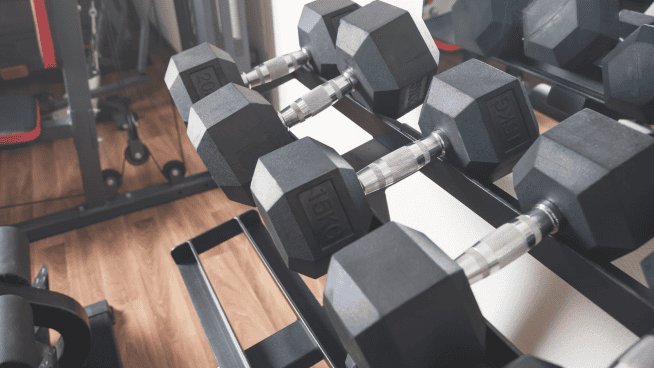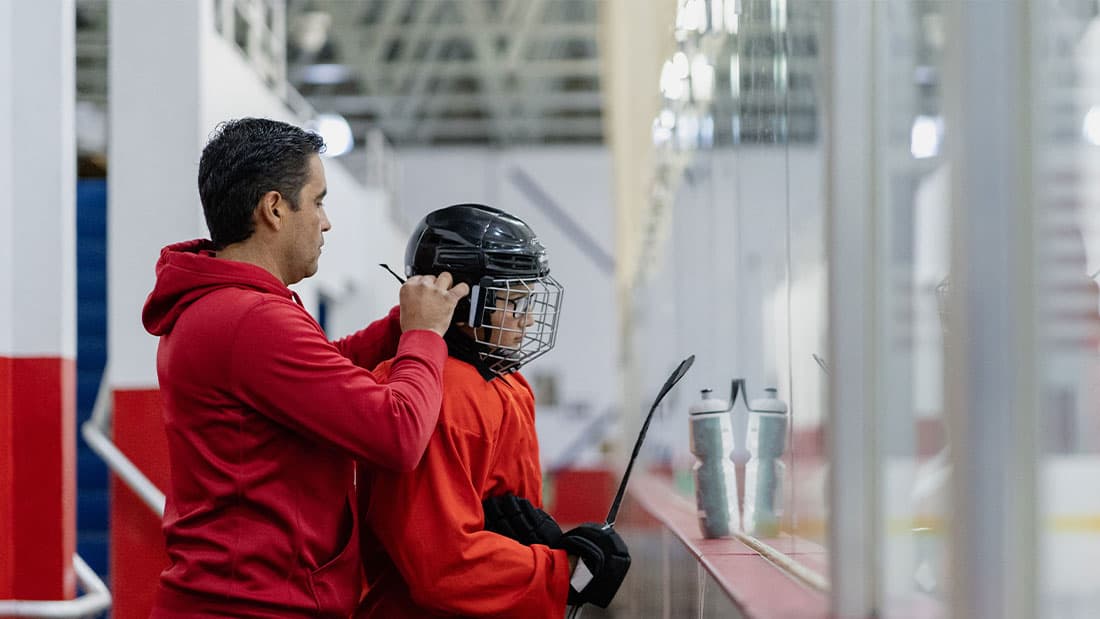3 Ways to Fix Bad Squat Form
Back Squatting tends to make its way into most strength training programs. So why is this exercise so commonly performed? It likely has to do with its usage in powerlifting, popularity among bodybuilding legends, and it’s a sure-fire way to build lower-body strength.
RELATED: Front Squat vs. Back Squat: What’s the Better Choice for Athletes
However, at one point, most of us have attempted back squatting only to step out of the rack and say, “That was awkward.”
The Back Squat places a high demand on the body, both in terms of strength and technique. If your Back Squats don’t feel right, look over the list below and figure out why.
You Lack Mobility Prerequisites
A Back Squat requires you to control specific ranges of motion at multiple joints. If you lack that range and control, you’ll compensate through another area to make up for what is lacking.
| Joints That Need Mobility | Compensatory Areas |
| Thoracic Spine | Lumbar Spine |
| Shoulders | Front of Shoulder |
| Hips | Knees & Lower Back |
| Ankles | Knees |
RELATED: A Beginner’s Guide to Back Squat Workouts
Your Bar Placement and Bar Selection Could Be Better
It’s easy to haphazardly step under the bar, walk it out, and drop down into your Back Squat. Most success in life comes with detailed preparation, and the Back Squat is no different. Consider the position of the barbell on your back and the type of barbell you’re using. Sometimes it takes a slight adjustment in your setup for your Squats to go from awkward to awesome.
- High Bar Position. Creates longer lever length for your torso. Requires good knee and ankle mobility. Upper-back strength is a limiting factor because of the more upright torso position. An ideal position if you have good ankle mobility, a strong upper back, and no knee issues.


- Low Bar Position. Even though you set the bar just a couple of inches farther down your back, this creates an increased forward lean and requires less ankle and knee mobility. It’s a great option if you’re limited in ankle mobility and are looking to squat heavy.


- Safety Squat Bar. This is a replacement for high bar squatting if you lack shoulder mobility.

- Giant Cambered Bar. A replacement for low bar squatting if you lack shoulder mobility.

You’re Sitting Your Hips Back Instead of Pulling Your Hips Down
Only one other exercise holds its own next to the Squat, and that’s the Deadlift. Because both reign supreme for building strong, powerful lower bodies, the technique for the two often get blended. However, squatting technique is different from deadlifting. When deadlifting you’re pushing your hips back to engage your glutes and hamstrings.
RELATED: Back Squat Technique: How to Hold the Barbell
Due to where the load is during a Back Squat, sitting your hips back can cause you to leverage your lower back and limit your depth. Instead, think about pulling your butt down between your heels. You’ll be able to leverage your hamstrings, glutes, and quads much better, while increasing your depth.
You Don’t Know Where Your End Range of Motion Is
Do you feel like your setup and descent are perfect, but you struggle to find the right bottom position? Placing a box underneath you when you squat is an excellent way to add external feedback and let you know where the end of the movement should be. Use a mirror or a coach to determine your ideal bottom position, where you’re able to maintain good technique and tension in your abs and lower body. Then set up a box at that height and tap your butt to it on each rep.
RECOMMENDED FOR YOU
MOST POPULAR
3 Ways to Fix Bad Squat Form
Back Squatting tends to make its way into most strength training programs. So why is this exercise so commonly performed? It likely has to do with its usage in powerlifting, popularity among bodybuilding legends, and it’s a sure-fire way to build lower-body strength.
RELATED: Front Squat vs. Back Squat: What’s the Better Choice for Athletes
However, at one point, most of us have attempted back squatting only to step out of the rack and say, “That was awkward.”
The Back Squat places a high demand on the body, both in terms of strength and technique. If your Back Squats don’t feel right, look over the list below and figure out why.
You Lack Mobility Prerequisites
A Back Squat requires you to control specific ranges of motion at multiple joints. If you lack that range and control, you’ll compensate through another area to make up for what is lacking.
| Joints That Need Mobility | Compensatory Areas |
| Thoracic Spine | Lumbar Spine |
| Shoulders | Front of Shoulder |
| Hips | Knees & Lower Back |
| Ankles | Knees |
RELATED: A Beginner’s Guide to Back Squat Workouts
Your Bar Placement and Bar Selection Could Be Better
It’s easy to haphazardly step under the bar, walk it out, and drop down into your Back Squat. Most success in life comes with detailed preparation, and the Back Squat is no different. Consider the position of the barbell on your back and the type of barbell you’re using. Sometimes it takes a slight adjustment in your setup for your Squats to go from awkward to awesome.
- High Bar Position. Creates longer lever length for your torso. Requires good knee and ankle mobility. Upper-back strength is a limiting factor because of the more upright torso position. An ideal position if you have good ankle mobility, a strong upper back, and no knee issues.


- Low Bar Position. Even though you set the bar just a couple of inches farther down your back, this creates an increased forward lean and requires less ankle and knee mobility. It’s a great option if you’re limited in ankle mobility and are looking to squat heavy.


- Safety Squat Bar. This is a replacement for high bar squatting if you lack shoulder mobility.

- Giant Cambered Bar. A replacement for low bar squatting if you lack shoulder mobility.

You’re Sitting Your Hips Back Instead of Pulling Your Hips Down
Only one other exercise holds its own next to the Squat, and that’s the Deadlift. Because both reign supreme for building strong, powerful lower bodies, the technique for the two often get blended. However, squatting technique is different from deadlifting. When deadlifting you’re pushing your hips back to engage your glutes and hamstrings.
RELATED: Back Squat Technique: How to Hold the Barbell
Due to where the load is during a Back Squat, sitting your hips back can cause you to leverage your lower back and limit your depth. Instead, think about pulling your butt down between your heels. You’ll be able to leverage your hamstrings, glutes, and quads much better, while increasing your depth.
You Don’t Know Where Your End Range of Motion Is
Do you feel like your setup and descent are perfect, but you struggle to find the right bottom position? Placing a box underneath you when you squat is an excellent way to add external feedback and let you know where the end of the movement should be. Use a mirror or a coach to determine your ideal bottom position, where you’re able to maintain good technique and tension in your abs and lower body. Then set up a box at that height and tap your butt to it on each rep.
[cf]skyword_tracking_tag[/cf]









